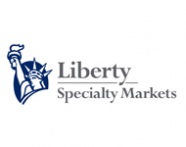Automation and Artificial Intelligence: An Underwriter’s friend or foe?

With the rise of AI and automation, should the insurance industry be concerned about the future of underwriting in the wake of technological development?
Authored by Han Byul Jung, Underwriter - Fine Art & Specie, Liberty Specialty Markets
Studying fine art fostered a keen interest in the way the art scene has changed over the years. The invention of photography was a ground-breaking development. There was of course huge excitement, but at the same time, widespread panic. People were concerned that painting would be replaced and disappear as an art form. The focus of painting at the time was traditional landscapes and portraits, both of which could be captured with a camera, rendering artists, supposedly, obsolete. Of course, almost two centuries later, painting hasn’t disappeared at all. The invention of photography was a milestone that enabled development so that painting and fine art co-exist in the way we know them today. It liberated artists from the purpose of depiction.
Now, Chat GPT is causing similar ripples through our industry and beyond, as people worry that jobs will be replaced with AI. Chat GPT surprised me with its ability. Nevertheless, I think we need to look at it positively – consider the opportunities this presents. Automation already exists in insurance, and history shows we need to work with it rather than against it. It reduces human error, accelerates policy turnaround and increases efficiencies. This adds value, as well as freeing up time for underwriters to focus on human interaction while automation works through arduous administrative tasks. Essentially, it allows us to focus on the really important things.
AI in practice
What is often underplayed is that automation already exists, supporting most corners of the underwriting process. In fine art and specie, an AI tool exists to analyse art market prices, and instantly verify art world facts, allowing underwriters to cross-check prices and ensure the best coverage for clients. Underwriters supply data that the tool analyses, automating the endorsement process. Prior to automation, this was often very time-consuming in cases of clients with big collections where there are a lot of movements, exclusions and inclusions. Underwriters are able to compile collection lists in various formats, from where this tool can extract and categorise the data. While this does not alter traditional underwriting methods, it streamlines the research process and highlights prospective inaccuracies in prices. The tool points underwriters towards any discrepancies in the information that they have, indicating which areas may contain inaccurate data, which they can then check manually and amend accordingly. This enhances the risk assessment process. Using data from all existing information in the art market and beyond, including auction results and primary market prices, the tool aids comparisons between the prices clients submit to insurers and all the data they have in place.
Each time this system is used, it becomes more intelligent and increases its data network, while ensuring value and driving fair prices for insurers, clients and brokers. It’s established in the US and is in the process being rolled out to continental Europe. Its use is not limited to insurers – it also has an app that can be added as a contact on a phone, which can provide auction results and art prices to a collector instantly. At a fair or an art gallery, simply enter the name of the artist, and it will present a summary of what it knows about that artist.
Elsewhere in the industry, insurers are partnering with consumer-friendly broking websites to allow individuals to insure items themselves, such as watches or other valuables. Customers can upload the manufacturer’s authenticity certificate or official valuation documents and insure items easily and at a competitive price. This is a great opportunity for insurance companies, because it frees up underwriters’ and brokers’ time for larger ticket, more complicated items. These low-exposure, smaller policies create a “safe base” on insurers’ books and shouldn’t be overlooked. In the event of a claim, the process can be automated to reduce operational costs.
Future implications
Historically, underwriters have spent a great deal of time travelling around the world to assess storage conditions, security and other policy-dependent facts in person. Where sufficiently advanced tools are in place, the nature of this process is changing. With the help of AI, underwriters are already able to assess security flaws and other aspects virtually. Automating this process reduces time and costs. As it develops, automated surveys are more appropriate for renewal of policies, where basic surveys have taken place in the past. However, if this development trajectory continues, the necessity of travel will be reduced considerably, even for new clients and policies.
AI is becoming more engrained in our professional services to the point where governments are responding. Switzerland is working on a draft bill on automation and AI, and other countries and supra-national authorities are sure to follow. The EU AI Act has been a work in progress for two years and while it may not be passed any time soon, there is a clear intention for regulation and legislation. This is a sentiment we would expect to see reflected in most jurisdictions, so corporates need to be alive to the international debate and ready to comply with policy and regulation which will help to keep AI ethical and within the law.
While automation and AI are understandably sources of anxiety for a great many professions, they’re not going anywhere. As demonstrated by the value-adds, efficiency, and time it saves, we must view automation as a friend, not a foe. If we commit to working alongside automation, we will have more time for the human interaction that it will never be able to replicate.
About Liberty
Liberty Specialty Markets offers specialty and commercial insurance and reinsurance products across key UK, European, Middle East, US and other international locations.
We provide brokers and insureds with a broad range of products through both the Company and Lloyd’s markets and have over 1,700 staff in approximately 65 offices. Liberty Specialty Markets was established in September 2013 bringing together Liberty’s company, syndicate and reinsurance operations into one combined operation, composed of three business units: Commercial, Specialty, and Reinsurance (Liberty Mutual Re). This integrated approach means brokers and clients can benefit from our global reach and operating efficiencies.
Liberty Specialty Markets is part of global insurer, Liberty Mutual Insurance Group, a diversified global insurer, formed in 1912 and headquartered in Boston, Massachusetts. Liberty Mutual is the 5th largest global insurer based on 2017 gross written premium, with over 50,000 employees in 30 countries and economies around the world. Our purpose is to help people embrace today and confidently pursue tomorrow. The promise we make to our customers throughout the world is to provide protection for the unexpected, delivered with care. We achieve this by offering a full range of personal, commercial, and specialty Property & Casualty insurance coverages. Our customers’ trust has earned us the 68th spot on the Fortune 100 list of largest corporations in the U.S., based on 2017 revenue.

